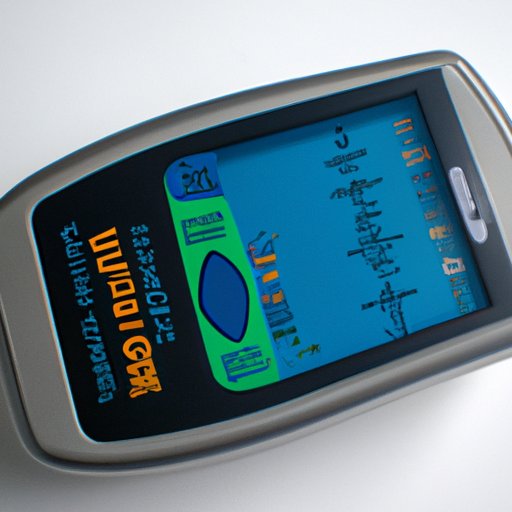I. Introduction
Pulse oximeters are handheld, non-invasive devices used to measure a person’s oxygen saturation levels and heart rate. These readings are vital for individuals with respiratory or cardiac conditions, as well as those undergoing certain medical procedures. Understanding how to read a pulse oximeter is essential for anyone who wants to monitor their health and wellness.
II. Your Complete Guide to Understanding Pulse Oximeters: A Step-by-Step Tutorial
A pulse oximeter is a small device that clips onto a person’s finger and uses light to measure oxygen saturation levels and heart rate. There are two types of pulse oximeters: portable and tabletop. Portable pulse oximeters are handheld and easy to transport, while tabletop models are larger and typically found in clinical settings.
The main parts of a pulse oximeter include the probe, display screen, and battery. The probe is the part of the device that clips onto the person’s finger, while the display screen shows the oxygen saturation levels and heart rate readings. The battery provides power to the device.
To properly wear a pulse oximeter, place the probe onto your finger, ensuring that it fits snugly but not too tightly. The display screen should face upward and be easily visible. It’s important to take readings when you are in a resting position and not moving around too much.
III. The Beginner’s Guide to Reading Your Pulse Oximeter: A Breakdown of the Numbers
The display screen on a pulse oximeter will show two main readings: oxygen saturation levels and heart rate. Oxygen saturation levels are shown as a percentage, while heart rate is displayed in beats per minute (BPM).
Normal oxygen saturation levels for a healthy individual typically range from 95-100%. If the reading falls below 90%, it may be an indication that the person is not receiving enough oxygen and should seek medical attention. Normal heart rate ranges can vary, but the average resting heart rate for adults is approximately 60-100 BPM.
IV. Maximizing Your Pulse Oximeter: How to Get the Most Accurate Readings
Several factors can affect the accuracy of pulse oximeter readings, including poor circulation, cold fingers, and nail polish. To ensure accurate readings, make sure the probe is placed properly on the finger, and avoid moving or talking during the reading. It’s also important to avoid smoking, drinking caffeine, or exercising before taking a reading, as these factors can affect the results.
Common mistakes to avoid when using a pulse oximeter include using an expired or damaged device, using the device in bright light, and moving around too much while the reading is being taken. Always consult the device’s instructions for proper usage and storage.
V. What Does Your Pulse Oximeter Tell You About Your Health? An In-Depth Analysis
Pulse oximetry is a non-invasive measurement of oxygen saturation levels and heart rate that can be used to diagnose and monitor a range of conditions, including asthma, chronic obstructive pulmonary disease (COPD), pneumonia, and heart failure. It can also be used during certain medical procedures to ensure that the patient is receiving enough oxygen.
Monitoring oxygen saturation levels and heart rate is important for individuals with respiratory or cardiac conditions, as well as those undergoing medical procedures. Proper monitoring can help detect potential issues early and prevent complications from arising.
VI. Pulse Oximeter Readings: What You Need to Know About Oxygen Saturation and Heart Rate
Oxygen saturation levels indicate the percentage of oxygen in the blood, and are important for maintaining normal body functions. Low oxygen saturation levels can lead to hypoxemia, a condition in which the body does not receive enough oxygen, and can cause shortness of breath, confusion, and other symptoms.
The heart rate is the number of times the heart beats per minute, and is an important indicator of overall cardiovascular health. A high heart rate can be an indication of several conditions, including dehydration, fever, and anxiety. It’s important to monitor heart rate regularly and discuss any changes with a healthcare provider.
VII. Interpreting Your Pulse Oximeter Results: Tips and Tricks for Accurate Readings
When interpreting pulse oximeter readings, it’s important to consider several factors, including the person’s age and general health. Oxygen saturation levels below 90% are generally considered low, and may be an indication that the person is not receiving enough oxygen. Heart rates above 100 BPM or below 60 BPM can also signal potential issues.
It’s important to monitor trends in oxygen saturation levels and heart rate, rather than relying on individual readings. Also, keep in mind that factors such as smoking, caffeine, and certain medications can affect pulse oximeter readings.
VIII. A Comprehensive Guide to Understanding Oxygen Saturation Levels and Why It Matters
Oxygen saturation levels indicate the amount of oxygen in the blood, and are crucial for maintaining normal body functions. Normal oxygen saturation levels for a healthy individual typically range from 95-100%. Low oxygen saturation levels can lead to hypoxemia, a condition in which the body does not receive enough oxygen and can cause a range of symptoms, including shortness of breath, confusion, and fatigue.
Monitoring oxygen saturation levels is important for individuals with respiratory or cardiac conditions, as well as those undergoing certain medical procedures. Proper monitoring can help detect potential issues early and prevent complications from arising.
IX. Conclusion
Understanding how to read a pulse oximeter is essential for monitoring oxygen saturation levels and heart rate, which can provide important information about a person’s overall health. Proper usage and interpretation of readings can help detect potential issues early and prevent complications from arising. By utilizing pulse oximeters, individuals can take control of their health and wellness.
